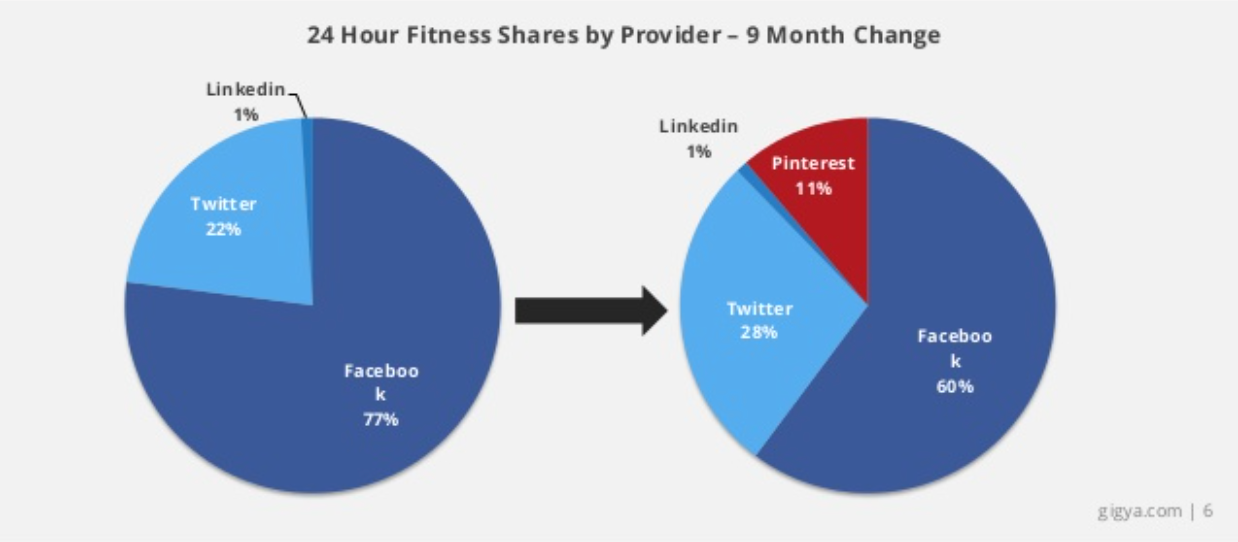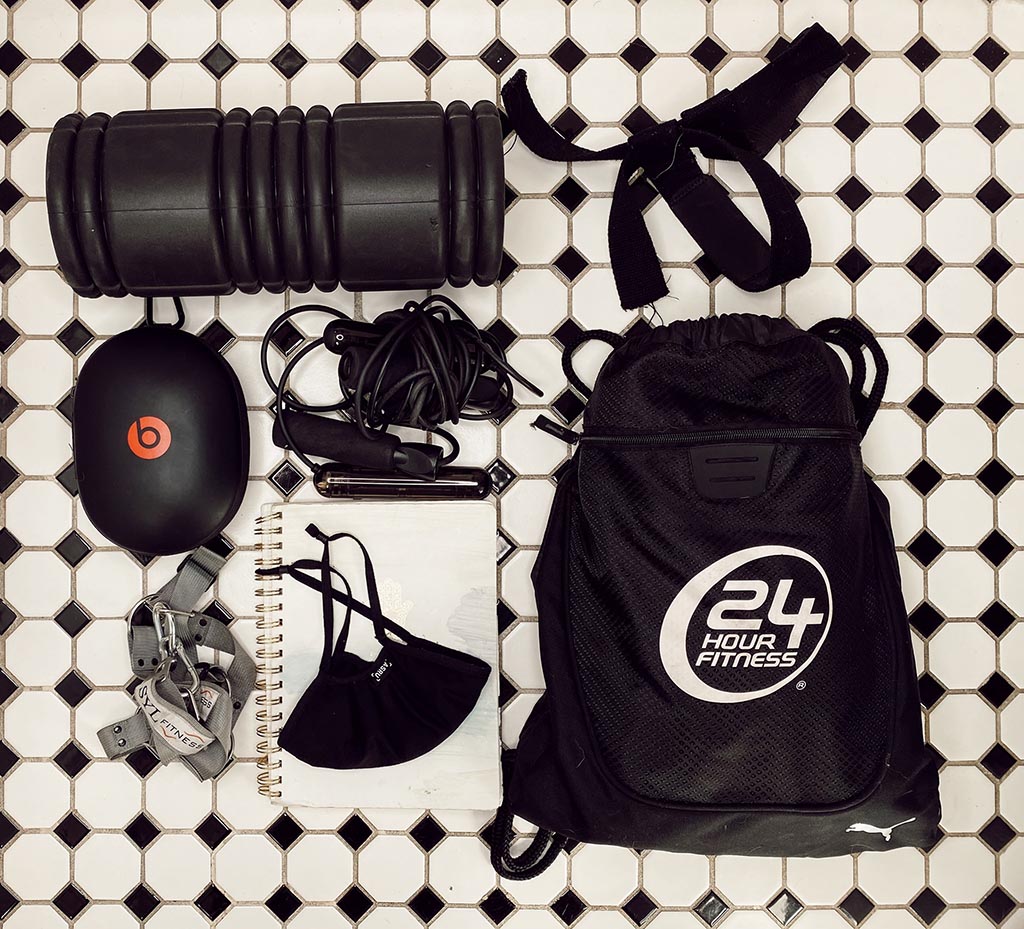Build your customer referral program without the dev time
Sign up for a free trial of GrowSurf to lower your customer acquisition costs, increase customer loyalty, and save gobs of time.
Launch Your ProgramThis blog post was a guest contribution by Emir Atli, founder of HockeyStack - a no-code analytics platform helping over 3,000 companies derive actionable insights efficiently. As an industry expert with hands-on experience building successful referral programs, Emir's insights provide valuable real-world perspective on leveraging social referrals as a powerful growth channel.
24 Hour Fitness is one of the largest fitness club chains in the U.S. with 400 clubs and about 4 million members.
The company is constantly expanding with savvy social referral marketing. Shifting to this system from traditional referral methods, such as direct mail campaigns or brochures, 24 Hour Fitness was able to drive over 330,000 referrals in the first 3 months of their campaign!
How did they implement a social referral system in 2013 and succeed?
What did they offer their members to entice referrals? How did they acquire so many people without giving away too many free-passes? Read on to find out.
As Josh Beruta, 24 Hour Fitness' head of marketing and communications, explained: "Traditional brick-and-mortar referral methods can be quite expensive." The company was seeking a more cost-effective way to acquire new members at scale. Social media referrals presented an appealing solution due to their viral potential and lower acquisition costs compared to other marketing channels.
Beyond cost savings, 24 Hour Fitness recognized that social referrals could help strengthen their relationship with existing members while acquiring new ones. They had observed that members often had better workout adherence and results when exercising with a friend or "workout buddy" who shared similar goals. Leveraging this insight, they enabled members to easily share guest passes with their networks.
Social media was an emerging channel at the time, presenting an affordable way to tap into people's digital networks. 24 Hour Fitness capitalized on this by enabling members to share three-day free guest passes directly on platforms like Facebook and Twitter. This low-friction approach made it easy for enthusiastic members to introduce the gym experience to their friends and family.
In designing their social referral program, 24 Hour Fitness aimed to address three key challenges:
By aligning incentives for current members to share the gym experience, 24 Hour Fitness could pursue sustainable growth on multiple fronts.
24 Hour Fitness started shifting to a social media based referral strategy in March 2013, and saw a massive increase in referral customers.
With the help of Gigya's social-login tools, the company used social sharing and was able to allow its members to send their friends personalized guest-passes.
24 Hour Fitness collects information from referrers’ and referees’ Facebook, Twitter, or other social media accounts in order to send them emails with exclusive offers.
This new strategy not only increased the number of new membership referrals, but also contributed to 24 Hour Fitness’s online presence and social currency across all major social media platforms.
At the start of the campaign, the vast majority of referrals were made on Facebook and Twitter. 9 months later, Pinterest took up about 11% of referrals and continued to grow strong.

Rather than offering direct financial incentives, 24 Hour Fitness took an innovative approach with a one-sided reward model focused on delivering value to members. While referrers didn't receive discounts or free passes themselves, they could share the gym experience with friends and family through the three-day guest pass. This allowed 24 Hour Fitness to acquire new members in a cost-effective way while aligning incentives for existing members.
The primary motivator for referrers was the ability to work out alongside friends and family - their "workout buddies" who could help keep them accountable and motivated. 24 Hour Fitness recognized this intrinsic desire for social support as a key driver of exercise adherence. By facilitating these connections through guest passes, they could boost engagement for existing members while acquiring new ones organically through their networks.
While the guest pass sharing was the core initial incentive, 24 Hour Fitness took a long-term view by identifying and cultivating their most influential referrers over time. They tracked metrics like friends/followers, shares, referral traffic volume, and sharing frequency to pinpoint their biggest advocates. This allowed them to double down on engaging and rewarding their most passionate members.
To show appreciation for their top referral sources, 24 Hour Fitness curated special branded gifts like fitness supply bags containing water bottles, workout gear, towels, and more. These tangible rewards were accompanied by personalized thank-you notes, reinforcing the gym's commitment to recognizing and nurturing their most influential member advocates.

Beyond the branded gifts, 24 Hour Fitness also rewarded their top referral influencers with exclusive pricing deals and promotions sent directly via email. This multi-tiered incentive structure, combining tangible gifts and personalized offers, helped motivate and retain their most valuable member advocates over time.
24 Hour Fitness' shift to social media referrals paid off tremendously, both in terms of new member acquisition and overall revenue impact. In just January 2014 alone, they generated over 8,400 direct referral sign-ups from social channels. Based on average lifetime member value, this influx of referral members represented over $600,000 in revenue - a remarkable return for their innovative program.
Beyond the impressive acquisition numbers, the social referral strategy delivered multiple compounding benefits for 24 Hour Fitness. By leveraging authentic word-of-mouth from existing members, they could reach prospective customers through a highly trusted channel while keeping acquisition costs low compared to traditional marketing like print brochures and paid ads. This cost-effective approach strengthened the bond between 24 Hour Fitness and their members by aligning incentives and facilitating real community growth.
An often overlooked advantage of 24 Hour Fitness' social referral program was the enhanced customer data and insights it provided. By partnering with Gigya's social login and sharing tools, they could capture rich profile data about referring members and their networks in a secure, privacy-compliant way. As Josh Beruta noted, this allowed them to "more effectively and efficiently acquire new members" while fostering trusting relationships through personalized, socially-driven experiences.
In 2013, 24 Hour Fitness started shifting their referral strategy to a social-media- based format, inspired by the motivation a "workout buddy" provides.
Since then, they saw a significant increase in their referrals and conversion rates while they were also decreasing their marketing expenses.
This new method allowed the company to maintain a cost-efficient campaign on social media, widened their customer radar, and helped them build better customer relationships.
Does social referral marketing work in other industries?
Absolutely - social referral marketing can be an effective strategy across diverse industries when executed thoughtfully. The key is to design a referral program that aligns incentives for your customers to authentically share your products or services with their networks. This could involve offering rewards, creating sharable content, or facilitating social experiences. When done well, social referrals can be a win-win by acquiring new customers affordably while strengthening relationships with existing ones.
How do I encourage people to make more referrals?
Understanding how to choose referral incentives is crucial to the success of your campaign. The key is to offer rewards that resonate with your target audience's core motivations and values. As 24 Hour Fitness demonstrated, sometimes the primary incentive isn't a financial reward, but rather an enhanced experience like gaining a "workout buddy." Other effective incentives could include exclusive access, recognition, tangible gifts, or giving back to causes they care about. The most successful referral programs align incentives in a way that creates value for both the referrer and referee.

Sign up for a free trial of GrowSurf to lower your customer acquisition costs, increase customer loyalty, and save gobs of time.
Launch Your Program
GrowSurf is modern referral program software that helps product and marketing teams launch an in-product customer referral program in days, not weeks. Start your free trial today.
Referral marketing can be a very cost-effective growth channel when done right. Here are 6 referral marketing mistakes you can easily avoid!
Word of mouth marketing can be the strategy that skyrockets your business and takes it to another level. Here we tell you all you need to know about it.
Do you want to promote your referral program, but don't know where to start? Here are 12 ways to attract more customers and grow your business!